The Art Detective
Revealed: The Biggest Consignors to New York’s $1.4 Billion Fall Auctions, From Eric Clapton to a Former Enron Executive
Plus, which major collector is selling some works with his name attached and flipping others anonymously?
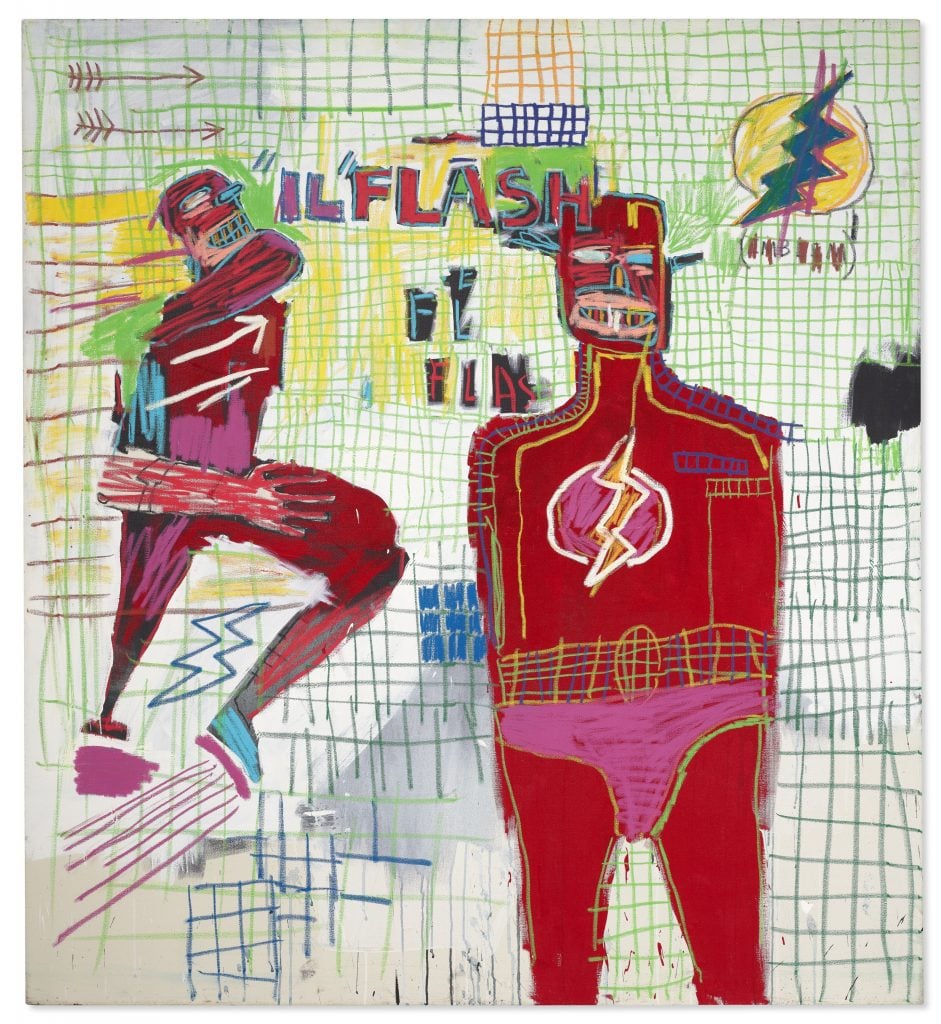
Plus, which major collector is selling some works with his name attached and flipping others anonymously?

Katya Kazakina

The Art Detective is a weekly column by Katya Kazakina for Artnet News Pro that lifts the curtain on what’s really going on in the art market.
The big auction season is upon us. Over the next two weeks, more than $1.4 billion worth of art is heading to Christie’s, Sotheby’s and Phillips in New York.
The priciest item is the Macklowe collection at Sotheby’s, whose first installment may bring in more than $400 million thanks to trophy works by Alberto Giacometti, Andy Warhol, and Mark Rothko. Ordered by the court to settle the bitter divorce between octogenarians Harry and Linda Macklowe, the event will test the strength of the highest end of the art market.
The Macklowes aren’t the only prominent sellers this month. At Christie’s, the Cox collection of Impressionist art is another gem, featuring 25 works amassed by businessman, collector, and philanthropist Edwin Lochridge Cox, who died last year. Standouts include a masterpiece by Gustave Caillebotte, Jeune homme à sa fenêtre (1875), as well as works by Cézanne and Van Gogh.
Sotheby’s, meanwhile, nabbed the collection of the late television producer Douglas Cramer, whose paintings by Jasper Johns, Ellsworth Kelly, Roy Lichtenstein, and others are expected to fetch $30 million.
Artists are getting in on the action, too: stars Rashid Johnson and Dana Schutz consigned new works to raise money for charity, a growing trend that seems to help everyone involved. NFT sensation Beeple is selling his first IRL sculpture directly at Christie’s (estimated at a whopping $15 million).
The Art Detective has identified a number of other prominent sellers in the upcoming auction season, who range from a New Jersey neurosurgeon to a convicted former Enron executive.
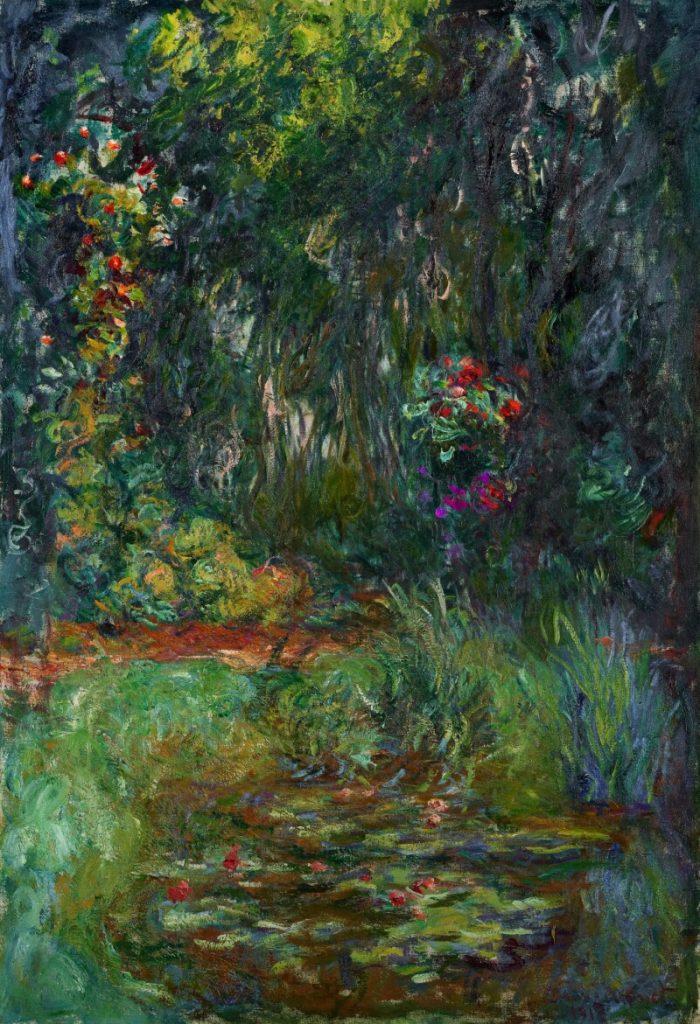
Claude Monet, Coin du bassin aux nymphéas (1918). Courtesy of Sotheby’s.
A financier, scientist, and art patron, Cordover is the anonymous consignor of the late addition to Sotheby’s Modern art sale lineup, Claude Monet’s Coin du bassin aux nymphéas (1918), according to sources familiar with the deal. It is estimated at more than $40 million.
The dense, vertical painting of waterlilies last appeared at auction in 1997, selling for $6.1 million, according to the Artnet Price Database. Since then, Cordober lent it generously to museum exhibitions around the country as well as Gagosian’s show of Monet’s late phase in 2010.
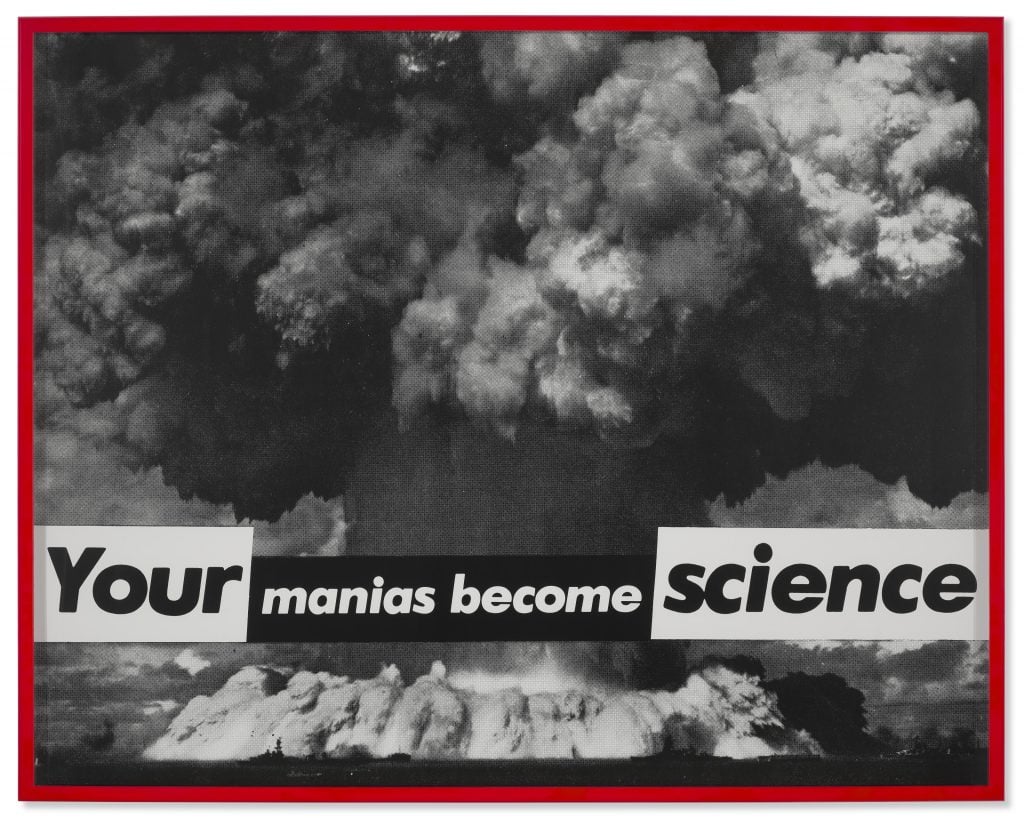
Barbara Kruger, Untitled (Your Manias Become Science) (1981). Courtesy of Christie’s Images, Ltd.
Steinberger is not a gazillionaire who chases trophies at auction. He drives a beat-up Jeep and lives in a modest house in New Jersey. Yet the neurosurgeon was able to build an enviable collection of work by Pictures Generation artists over 25 years.
“He built it on his own,” said art advisor Gabriela Palmieri, who helped facilitate the sale. “He had a passion and dedication.”
As he enters his eighth decade, Steinberger decided to turn the page and sell 41 lots at Christie’s. Offered anonymously, the group is designated as “Image World: Property from a Private American Collection.” The upcoming lots are estimated at $33.9 million to $49.7 million, and more works will be offered in future sales, Christie’s said.
One significant decision was made early on: “We were not going to sell in the same room as Macklowe,” said Palmieri, a former Sotheby’s specialist, noting that Steinberger’s collection deserved to be the star of its own show.
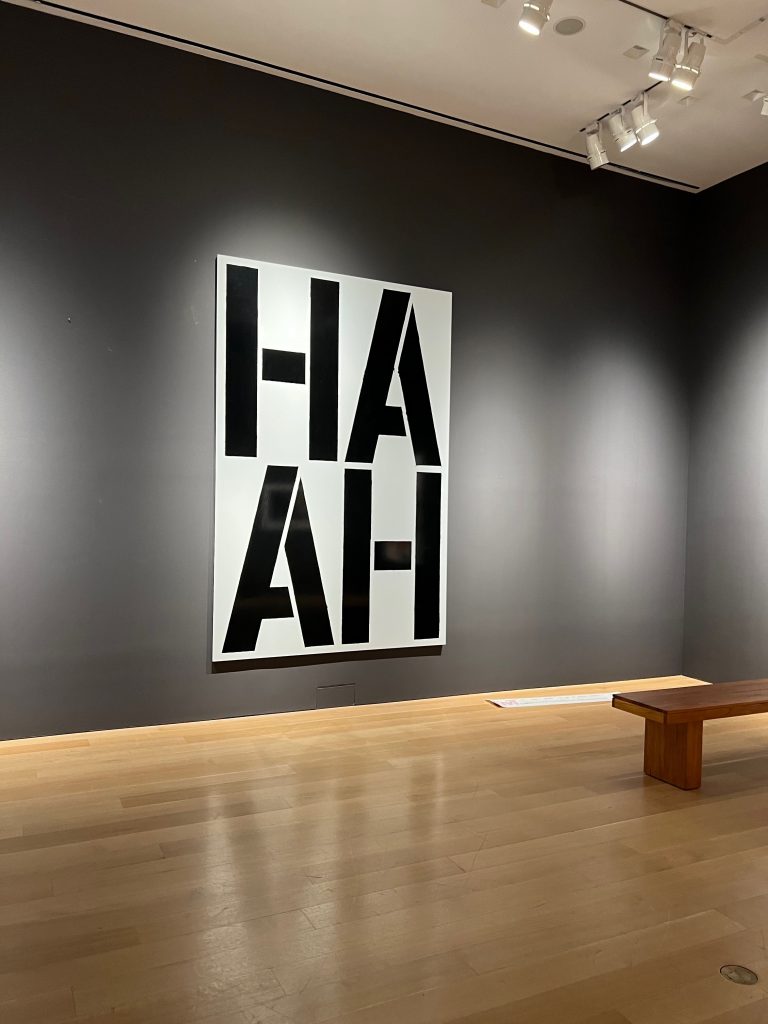
Work by Christopher Wool on view at Christie’s. Photo: Katya Kazakina.
Steinberger acquired many of the works directly from galleries like Gagosian, Metro Pictures, and Skarstedt. The trove includes three major photographs from Sherman’s “Centerfolds” series, offered in the same sale for the first time; four paintings by Christopher Wool, whose market has been on shaky ground lately; and Barbara Kruger’s Untitled (Your Manias Become Science) from 1981.
Most of the works had been either at Steinberger’s home or on loan to major museum exhibitions, Palmieri said.
Building a collection of this caliber while working as a surgeon took discipline. “These were big acquisitions for him,” she said. “He fell in love with the material.”
Sometimes, Steinberger had to sell works to upgrade or acquire something he coveted. Wool’s “HA-AH” painting was one of these pieces. It came up for auction in 2014, selling for $10.4 million. Steinberger bought it privately afterward—and had to sell other works he owned for the equivalent price. At nine feet tall and six feet wide, it’s the same size as the painting that holds Wool’s auction record, Untitled (Riot), which fetched $29.9 million at Sotheby’s in 2015.
“We sold several works in order to reach that dream,” Palmieri said.
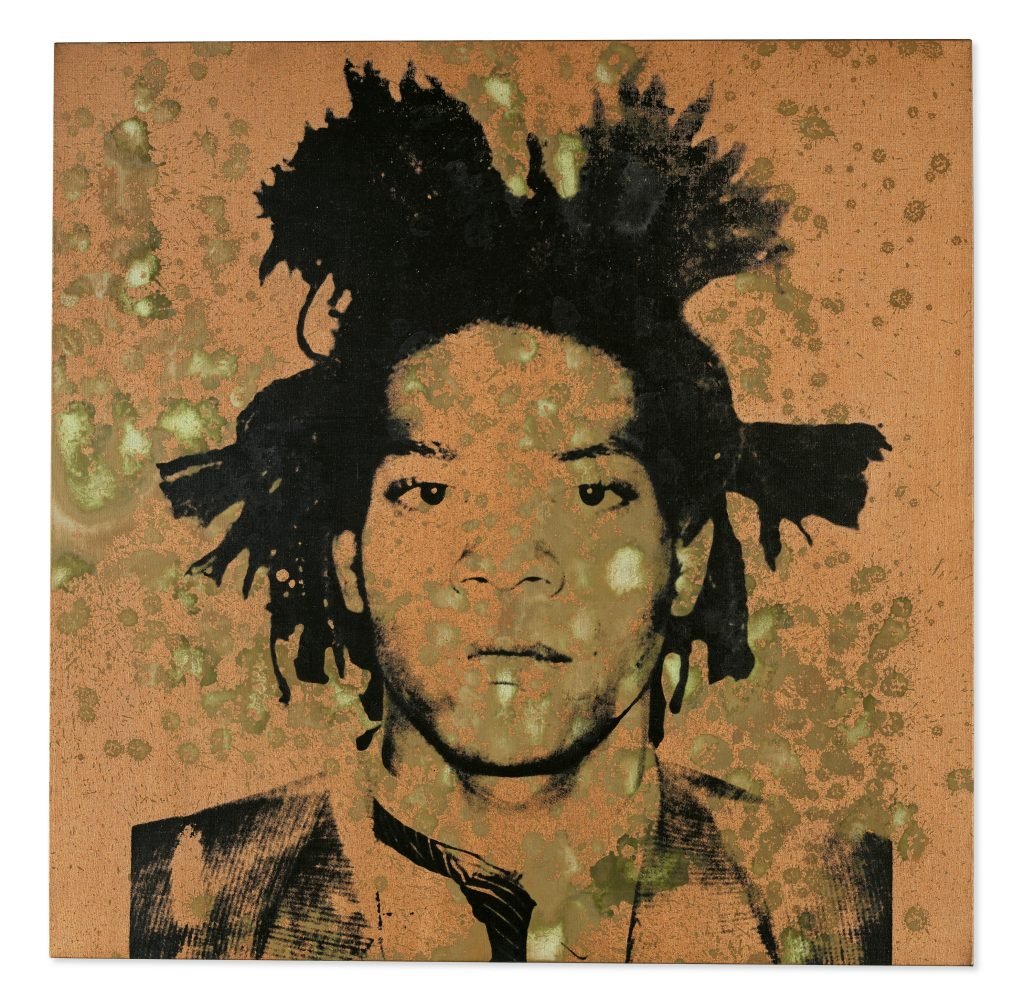
Andy Warhol, Jean-Michel Basquiat (1982). Courtesy of Christie’s Images, Ltd.
The newsprint magnate, known for his tough negotiating style and canny market timing, is parting with at least two works: Warhol’s portrait of Jean-Michel Basquiat, estimated at more than $20 million, and Basquiat’s Flash in Naples, estimated at $14 million to $18 million.
A lot of ink has been spilled on Jean-Michel Basquiat (1982), which is designated as Brant’s painting. Flash in Naples (1983) is being sold anonymously. Christie’s guaranteed the work and, so far, it hasn’t been backed by a third party, which represents a potential risk for the auction house.
The colorful gridded composition depicts the titular D.C. comic book hero as two figures (one standing, another running) with a lightning bolt on his chest and fuchsia briefs.
The work has appeared at Sotheby’s twice before, fetching $3.3 million in 2010 and $8.1 million in 2017 when it was bought by Jose Mugrabi, an art dealer and collector. It was part of a recent exhibition, “Jean Michel Basquiat: Royalty, Heroism, and the Streets,” at the Lotte Museum of Art in Seoul, Korea, which presented 150 works from the Mugrabi collection. Brant bought it sometime after the show ended in February, according to a person familiar with the deal, making it a quick turnaround to the auction block.
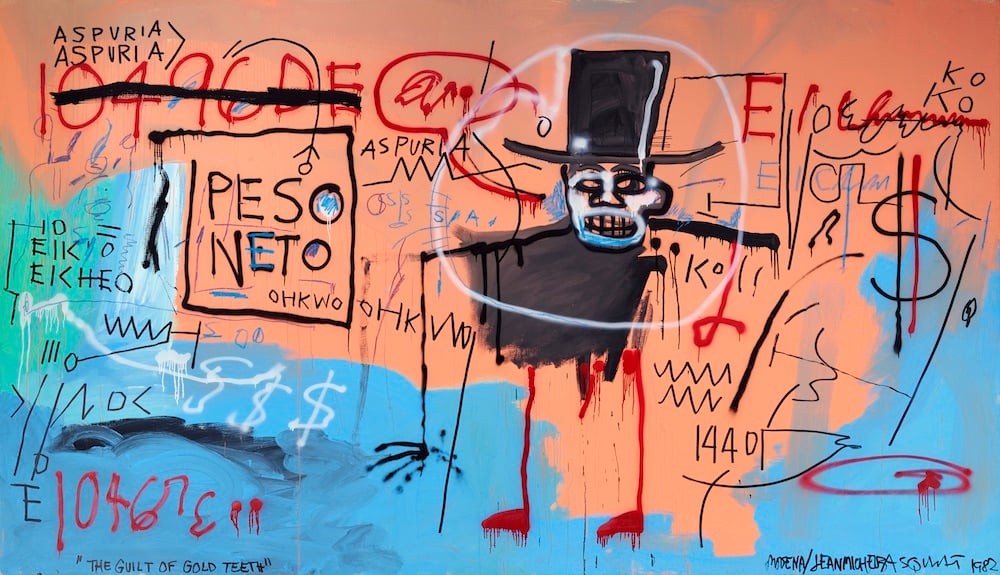
Jean-Michel Basquiat, The Guilt of Gold Teeth (1982). Image courtesy Christie’s.
Basquiat’s canvas The Guilt of Gold Teeth is eight feet tall and 14 foot wide, and it comes with an equally monumental estimate of $40 million to $80 million. The work has been consigned anonymously by Jose Maria Cano, a Spanish artist, collector, and former member of pop-rock band Mecano who loved the legendary street artist so much he even dedicated a song to him.
The provenance indicates that the work last appeared at auction in 1998, selling at Sotheby’s for $387,500, and has been in the same collection ever since. Christie’s declined to comment and Cano couldn’t be immediately reached.
The work has a third-party guarantee, which means it’s as good as sold.
Painted in 1982, the canvas is filled with the enigmatic words, signs, and cyphers swirling around the central figure of Baron Samedi, master of the dead in Haitian Voodoo, sporting a top hat, black frock and skull-face painted white.
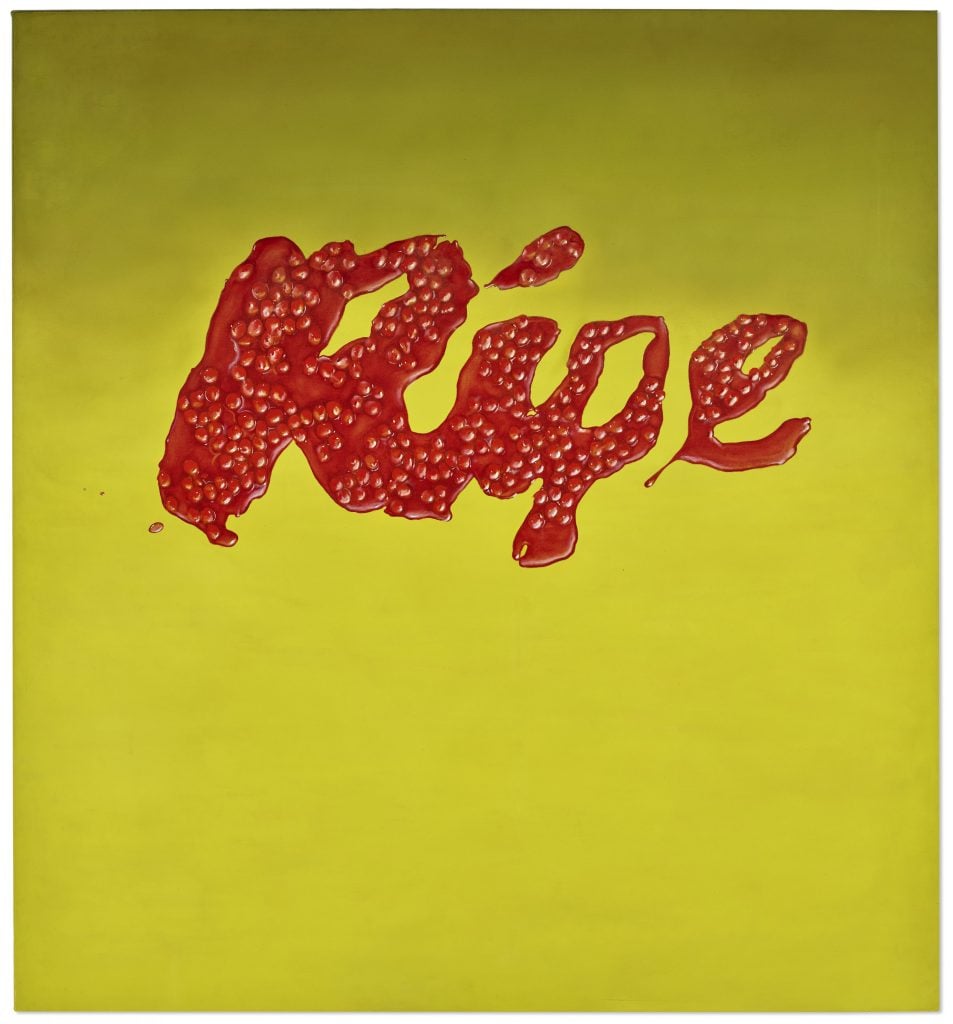
Ed Ruscha, Ripe (1967). Courtesy of Christie’s Images, Ltd.
A convicted Enron assistant treasurer turned art advisor is selling Ed Ruscha’s Ripe at Christie’s, according to a person familiar with the work (her husband, Andy Fastow, a convicted felon and Enron’s chief financial officer, was among the key people in the Enron scandal).
The 1967 canvas is estimated at $18 million to $22 million and will be offered anonymously in the same sale as Warhol’s Jean-Michel Basquiat. Ripe is guaranteed and has third-party backing.
The work was acquired in 2000 from Anthony D’Offay gallery in London and was on loan at the Menil Collection in Houston in 2000 to 2001 before the Houston-based Enron began to unravel amidst fraud allegations and bankruptcy proceedings.
Christie’s declined to comment on the consignor. Weingarten didn’t respond to a call and email seeking comment.
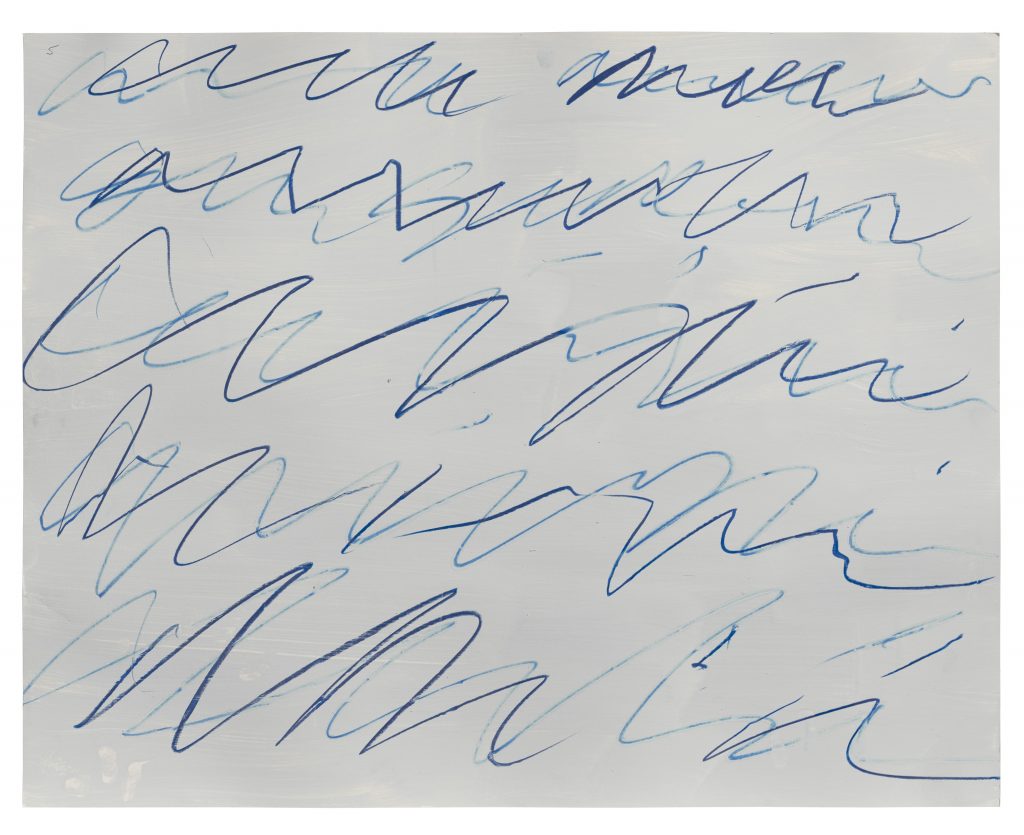
Cy Twombly, Untitled (Roman Note) (1970). Courtesy of Christie’s Images, Ltd.
The star musician is parting with Untitled (Roman Note) by Cy Twombly. The 1970 work on paper is estimated at $1.8 million to $2.5 million at Christie’s, and comes right after Ripe.
Clapton paid $69,435 for the work in 1995 at Christie’s in London. It isn’t guaranteed.
The painting depicts Twombly’s signature scribbles in pale blue and gray crayon. It’s part of the period (1966–71) when Twombly created his famous blackboard paintings, according to Christie’s.